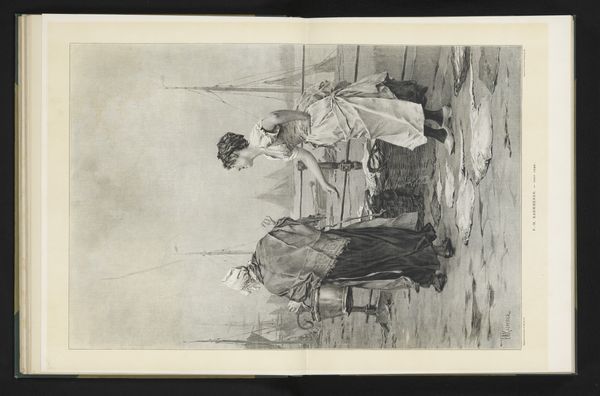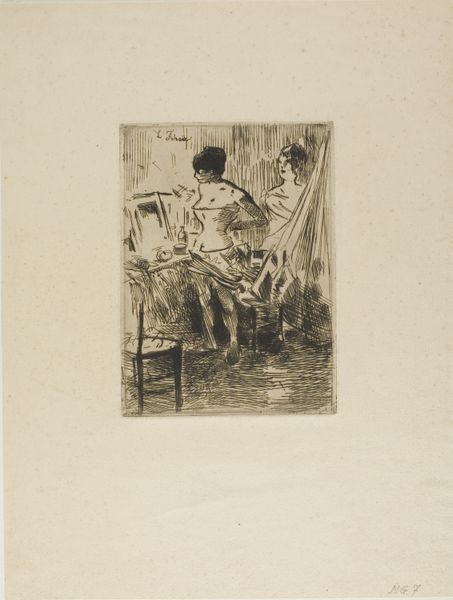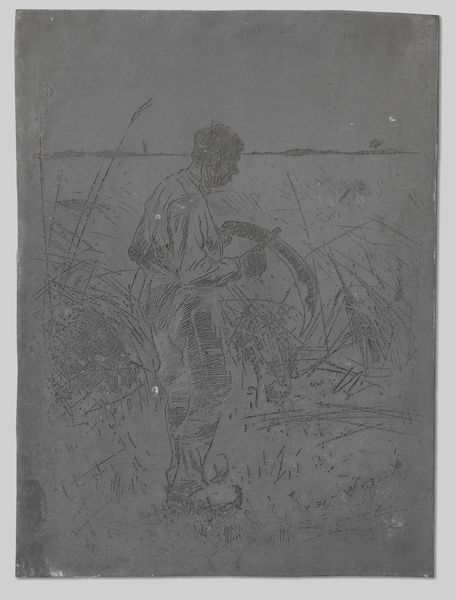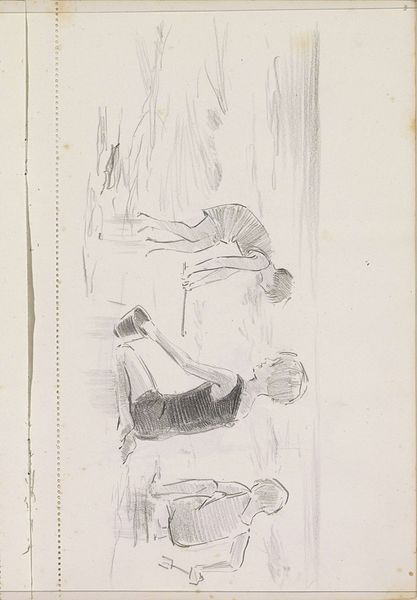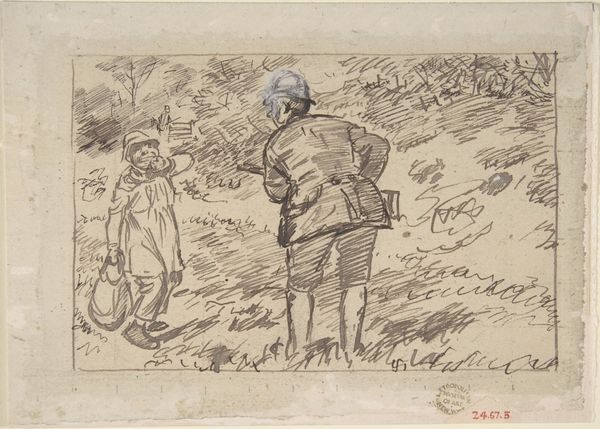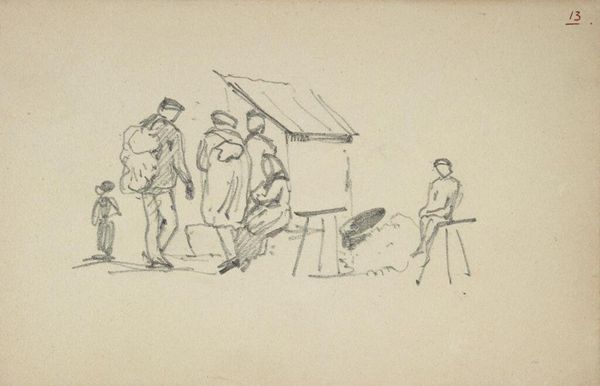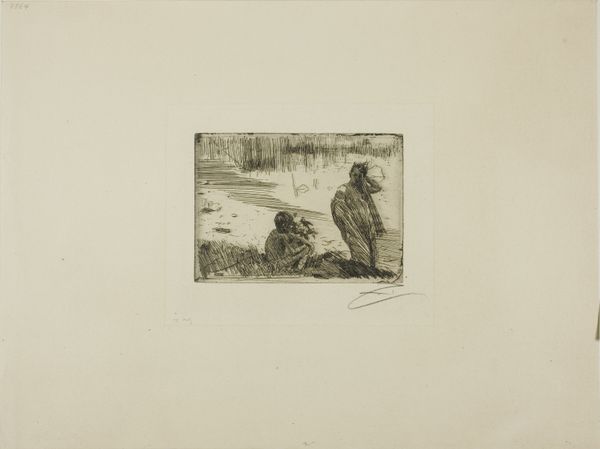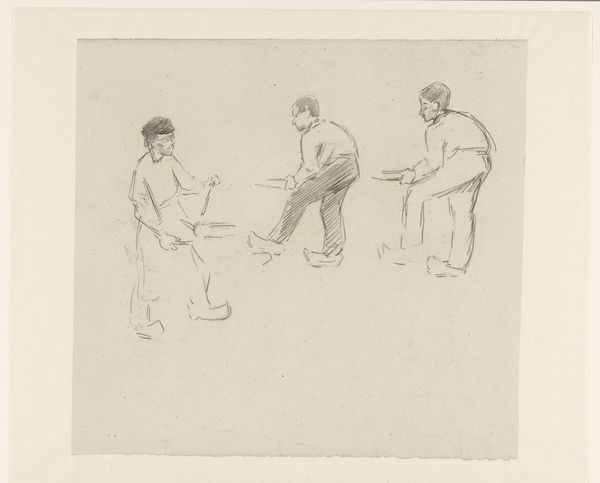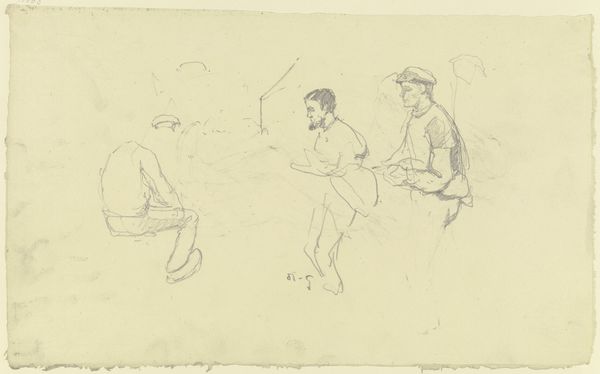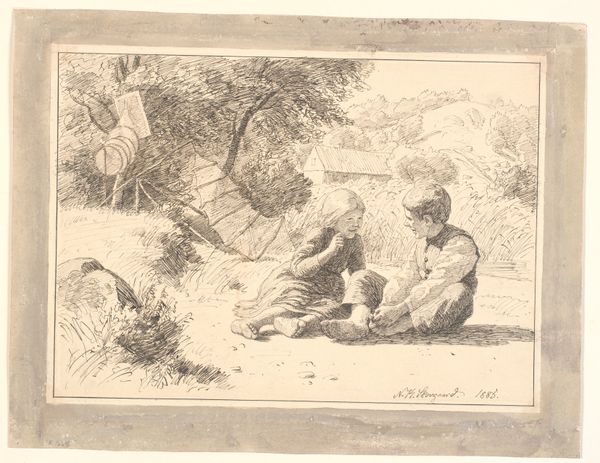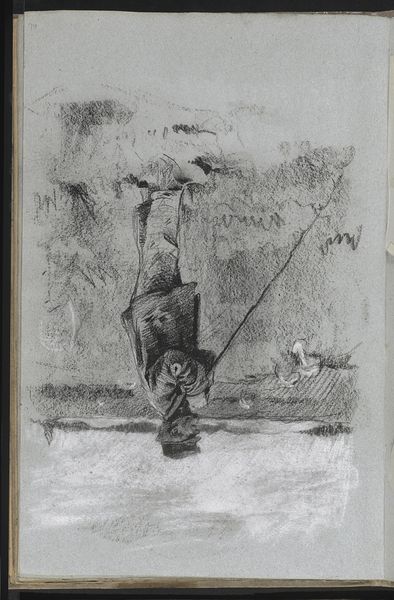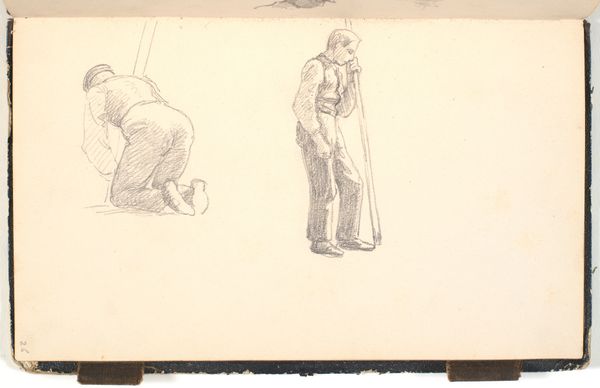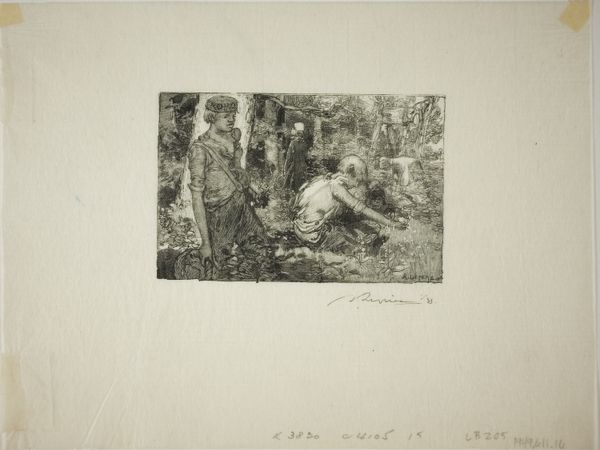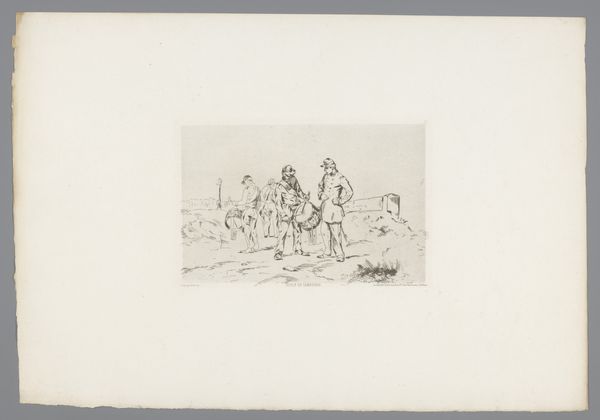
drawing, print, paper, ink
#
drawing
#
narrative-art
# print
#
landscape
#
figuration
#
paper
#
ink
#
line
#
genre-painting
#
realism
Dimensions: 141 mm (height) x 122 mm (width) (billedmaal)
Curator: H.P. Hansen’s "Tyrihans," created between 1829 and 1899, employs ink on paper to construct a rural scene that blends landscape and genre elements. Editor: Immediately striking is the simplicity of line. The composition is sparse but rich, and creates an isolated atmosphere, a quiet study in ink, a testament to minimal expression, evoking melancholic reflections on rural life. Curator: The narrative embedded in "Tyrihans" points to the socio-economic realities of rural Norway, with figures representative of the working class and perhaps hinting at themes of hardship and perseverance. The titular character of Norwegian folktales often represented the underdog. Is Hansen maybe commenting on their role in society? Editor: Observe how the lines themselves, varying in weight and direction, construct spatial depth—they guide our eyes deeper into the scenery with surprising economy. The staccato marks denoting foliage, juxtaposed with the stark linearity of the fence, show off the formal brilliance of the print. Curator: Considering the historical context, this drawing could also be interpreted as a subtle commentary on class division, perhaps even hinting at social reform or a call for greater equity within the rural hierarchy. Editor: Note the use of negative space around the two figures, underscoring their separation. One standing passively on the other side of the gate, the second one leaving to an uncertain destination. It masterfully enhances a sense of isolation, even within the limited plane of paper. Curator: Artistically, Hansen gives us insight into Norwegian rural society. The placement and interaction of the figures perhaps underscore tensions between the working class, hinting at social discourse within a seemingly calm exterior. Editor: Hansen's drawing technique creates the overall effect here; a distilled composition. The work serves to create something powerful with very few artistic ingredients. Curator: Ultimately, the emotional weight of this artwork emerges not just from its subject matter, but from the societal narratives Hansen gently alludes to within the context of his time. Editor: I will concede the drawing makes the viewer reflect upon one's personal experiences; it shows, as Hansen suggests, that emotional potency is in its purity.
Comments
No comments
Be the first to comment and join the conversation on the ultimate creative platform.
